London is home to a number of ruined churches – in the City of London alone there are several, victims of the bombing raids of the Luftwaffe in the Second World War. However, not all of the ruined churches of Greater London are victims of the Blitz. In Stanmore, a comfortable suburb at the top of the Jubilee Line, another ruined church can be found alongside its Victorian successor. The current parish church of St John the Evangelist was built in the mid-19th Century, but the picturesque ruins of the 17th Century church it replaced still survive in the church’s large burial ground.
The burial ground is a tranquil place, despite being close to a busy main road. Numerous squirrels darted in and out of the gravestones and a pair of magpies strutted around, while pigeons cooed softly, hidden from sight. It was a humid September day when I visited, with shafts of sunlight shining through the clouds. For an hour or so I had the place to myself, before the ruin was opened for the afternoon.
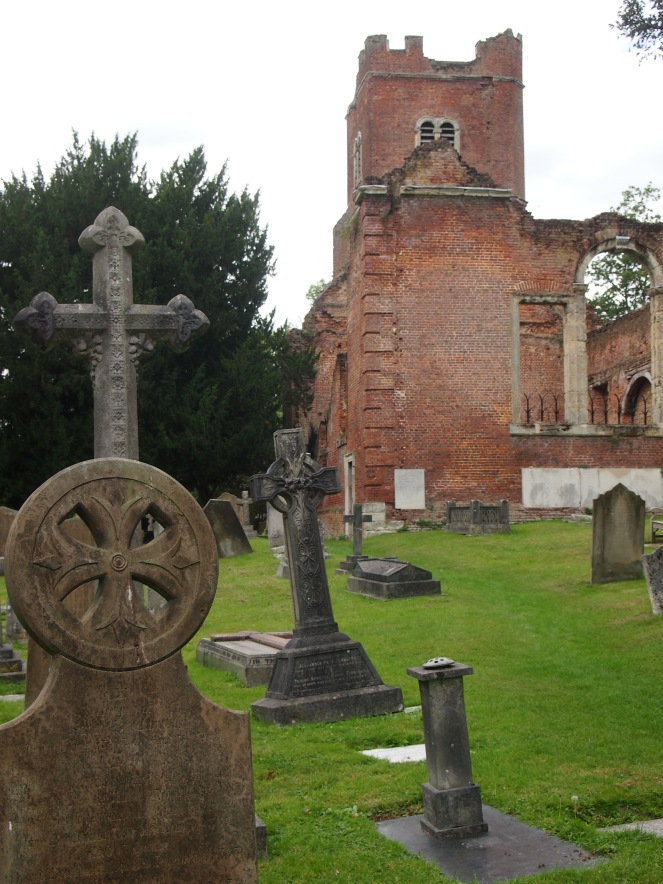
The churchyard itself is impressive and interesting, full of headstones and monuments dating back to the 18th Century.

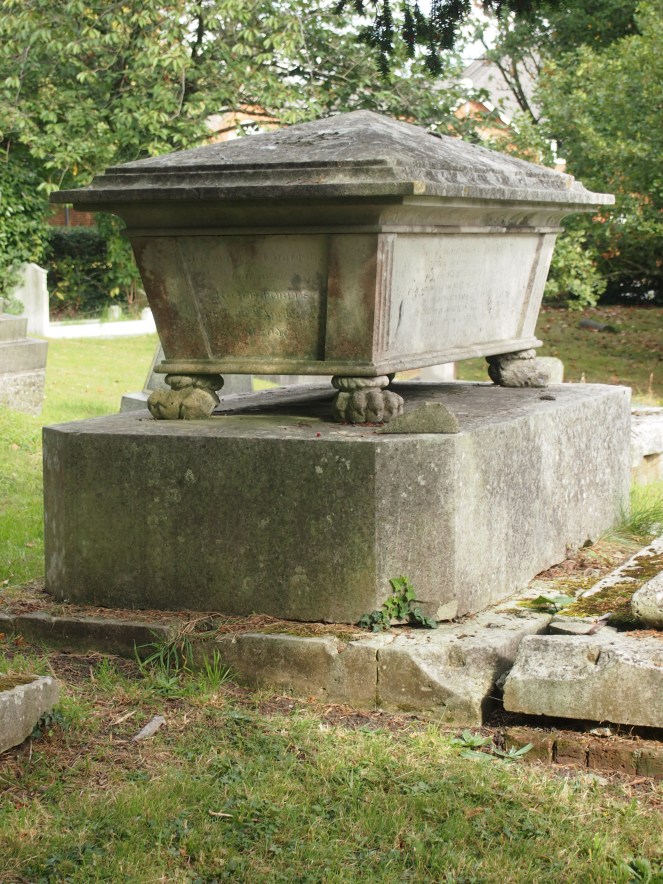
I always enjoy coming across graves that tell a little more than the names and ages of the deceased, and this burial ground did not disappoint. A number of memorials gave tantilising glimpses into the people whose deaths they mark. The imposing memorial with the clawed feet, pictured above, comemmorates Rosee Forbes of Stanmore Hill and tells a little about her life, or at least how her widower James saw her.
This monument /emblematical of the modest virtues it commemorates / is dedicated to ROSEE FORBES / wife of JAMES FORBES esq. of STANMORE HILL / Influenced by the mild spirit of Christinity in her were united the notable characteristics of a dutiful daughter, an affectionate wife, a tender mother, and a sincere friend / After two years of patient suffering during a most [word unclear] illness the gentle spirit humbly trusting in her …
The inscription becomes unclear after this, but what is clear is the affection that James Forbes wished to remember her with.
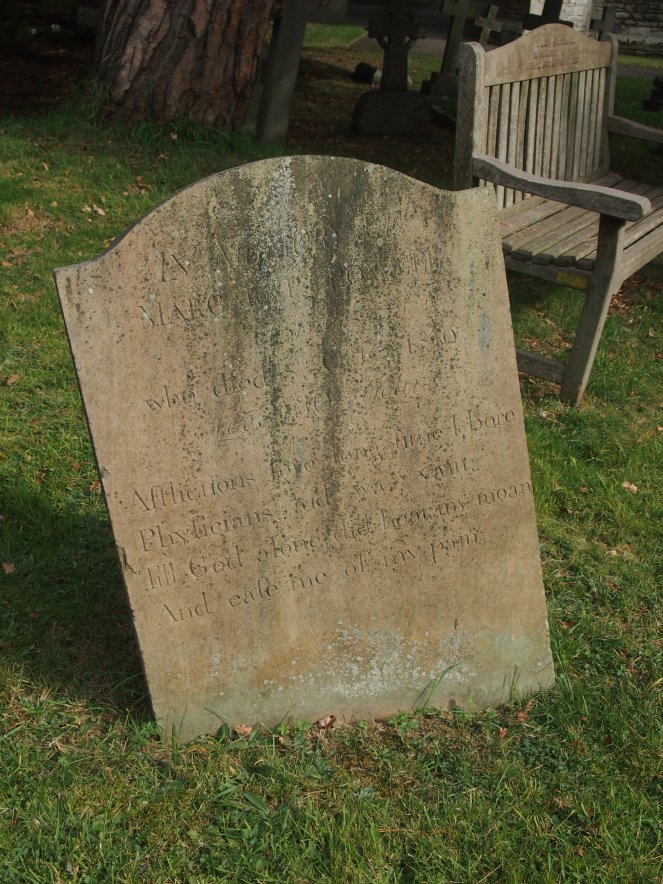
The grave of Margaret Powell, who died in 1810 aged only 36, suggests that like Rosee Forbes her final years were blighted by illness and pain.
Afflictions sore long time I bore
Physicians aid was vain
Till God alone did hear my moan
And ease me of my pain
Perhaps poor Margaret, knowing her end was close, wrote her own eulogy.
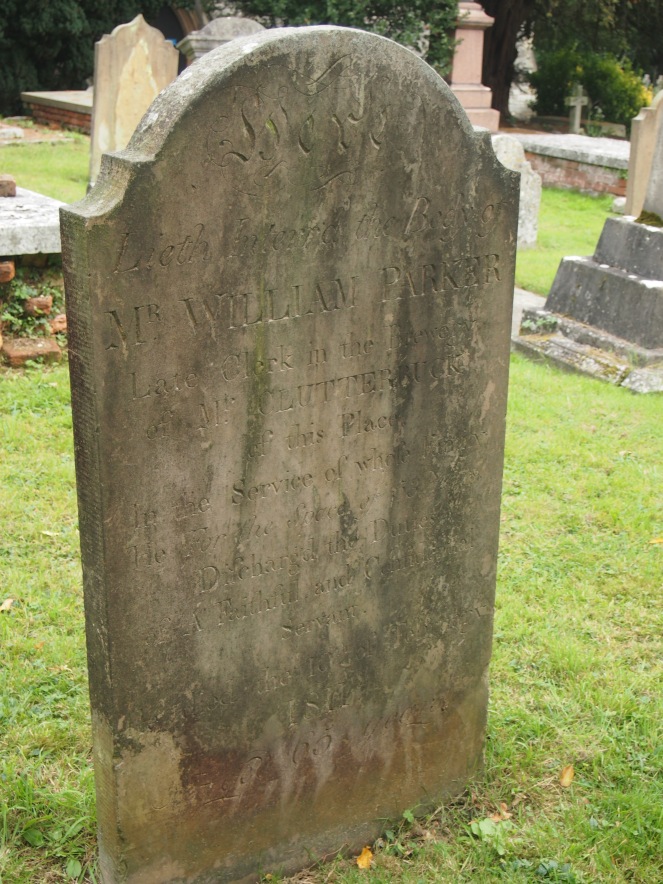
The grave pictured above is probably my favourite of the graves and monuments in the churchyard, not because of any particular artistic merit but because of the story it tells. The gravestone marks the final resting place of Mr William Parker, who was the clerk at a local brewery owned by Mr Clutterbuck, who sounds as though he has stepped from the pages of a Charles Dickens novel. William worked for the Clutterbucks for 53 years and “discharged the Duties of a Faithful and Confidential Servant.” William died aged 65 in 1811, so he had worked for the Clutterbucks since he was eleven or twelve years old. The quality of the grave and the warm inscription suggests that his employers were very fond of him and mourned his loss.
A quick look into the history of Stanmore shows that Clutterbuck’s brewery first began operating in the mid-18th Century. Brewing ended at the site in 1916, but the brewery house with its white clock tower still exists, although it has now been converted into housing. Perhaps in the future Flickering Lamps will return to Stanmore and explore more of the fascinating old buildings this suburb has to offer.


Probably the most famous inhabitant of the churchard is one half of the theatrical partnership of Gilbert and Sullivan. W.S. Gilbert, along with Arthur Sullivan, created many much-loved comic operas such as HMS Pinafore and The Pirates of Penzance. He also financed the Garrick Theatre in London’s West End. His death in 1911 was tragic – he had dived into a lake to try and save a young woman, but suffered a heart attack whilst in the water and died. The striking white marble angel that marks his grave is one of the most distinctive and attractive monuments in the burial ground.
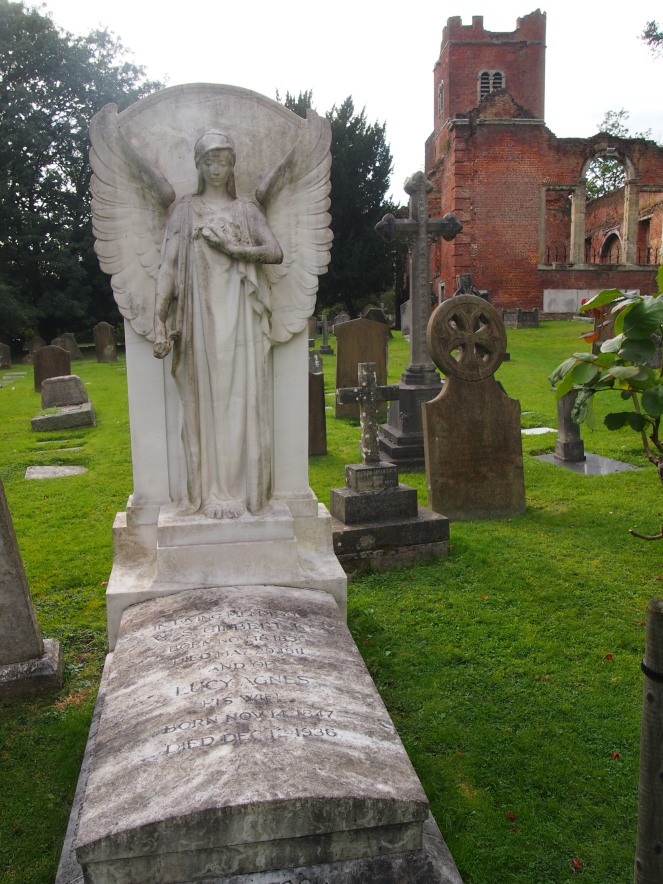
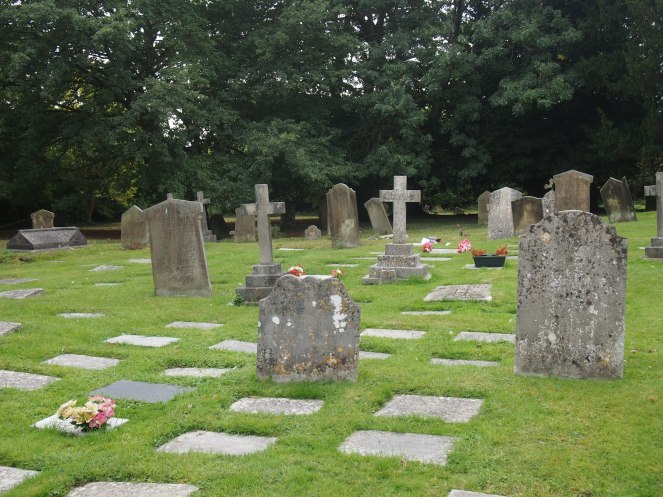
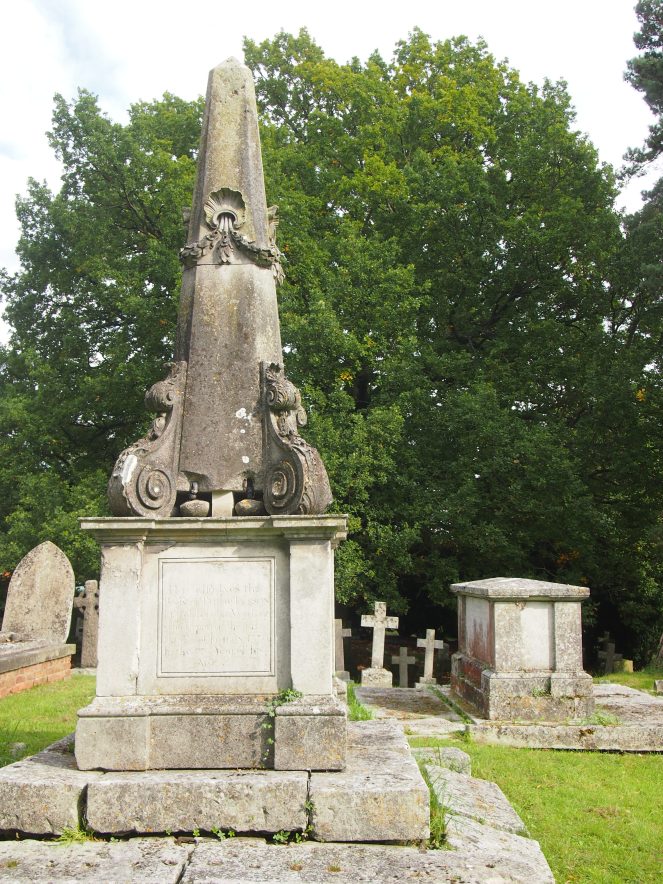

I came to Stanmore to see the ruined church, but the churchyard that surrounded it was a pleasant surprise – full of interesting graves and monuments. I spent a really enjoyable hour or so walking between the old graves, reading the inscriptions and taking photographs before the ruined church was opened for the afternoon by a volunteer.

The ruined church dates from 1632, and its architectural style is a rare one – one reason why the ruin is so precious. Built entirely from brick, and with walls that are two feet thick in places, the church reflects the architectural practices of the early Stuart period. English Heritage describe the ruin as being “of architectural importance as an example of Caroline classicism, showing the impact of Inigo Jones.” It’s not a very large church, and this is the reason that in the late 1840s, work began on a new, larger church that would be more suitable for Stanmore’s growing population.
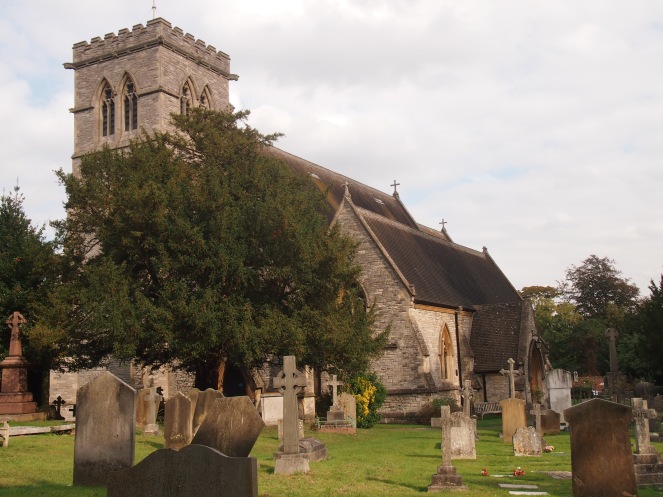
Once the new church was completed, demolition work began on the old Stuart church. But before long, local opposition to the church’s destruction became so strong that the demolition was halted. Perhaps it was the case that local people were fond of the old church, and saw it as an important part of the local area. In the mid-19th Century the concept of preserving old and interesting buildings was almost non-existant – despite a lot of interest in history during this period, old buildings were pulled down on a regular basis to make way for more modern structures.
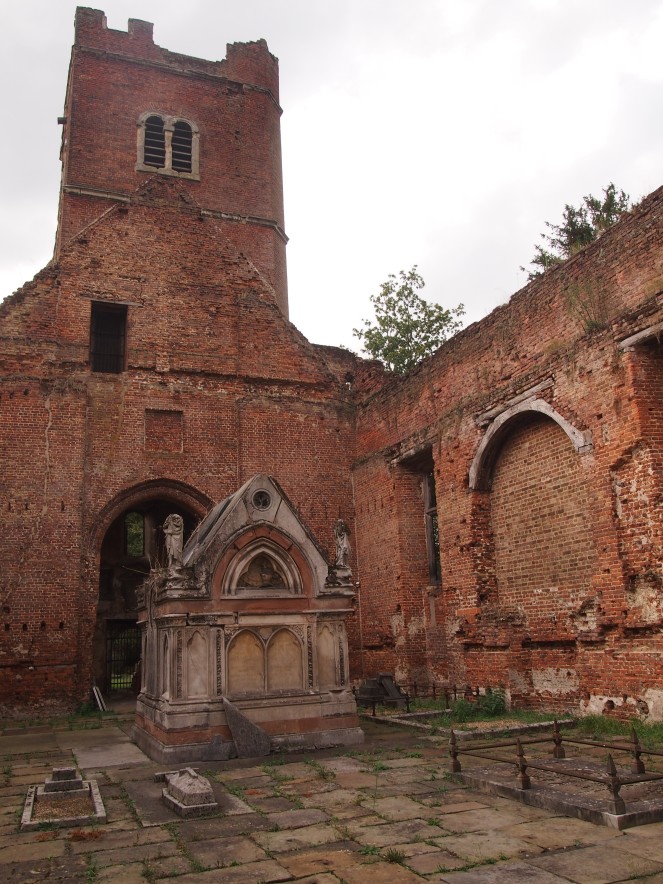

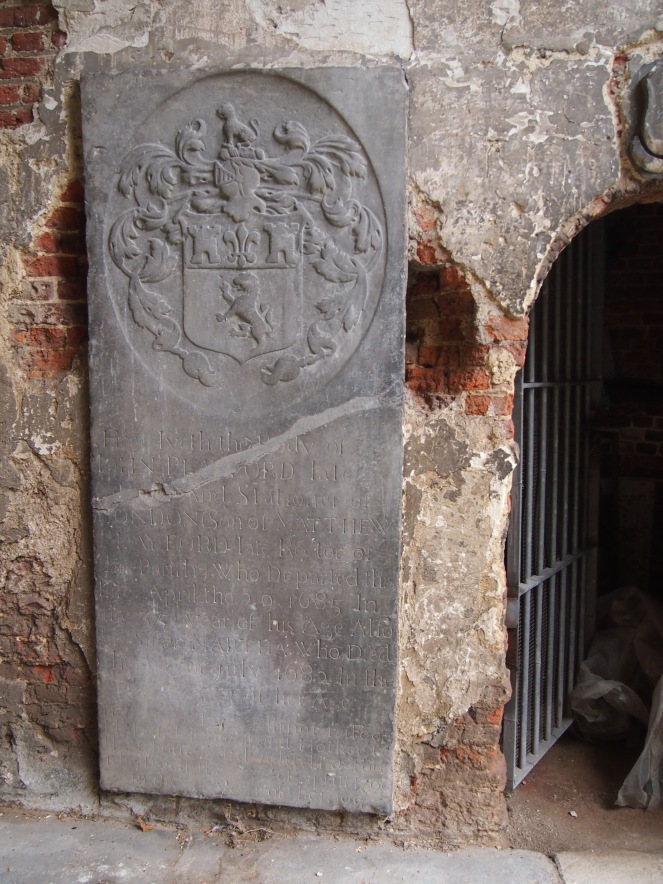
Most of the monuments in the old church were removed to a room in the tower of the new church, where they can occasionally be seen by the public, though a few memorials from the 17th and early 18th centuries remain in the old church. After the church fell into ruin, those with wealth and influence began to be buried within the shell of the old building. Several of these tombs survive, with the most spectacular being the grand Gothic mausoleum of the Hollond family, which was built in 1867.
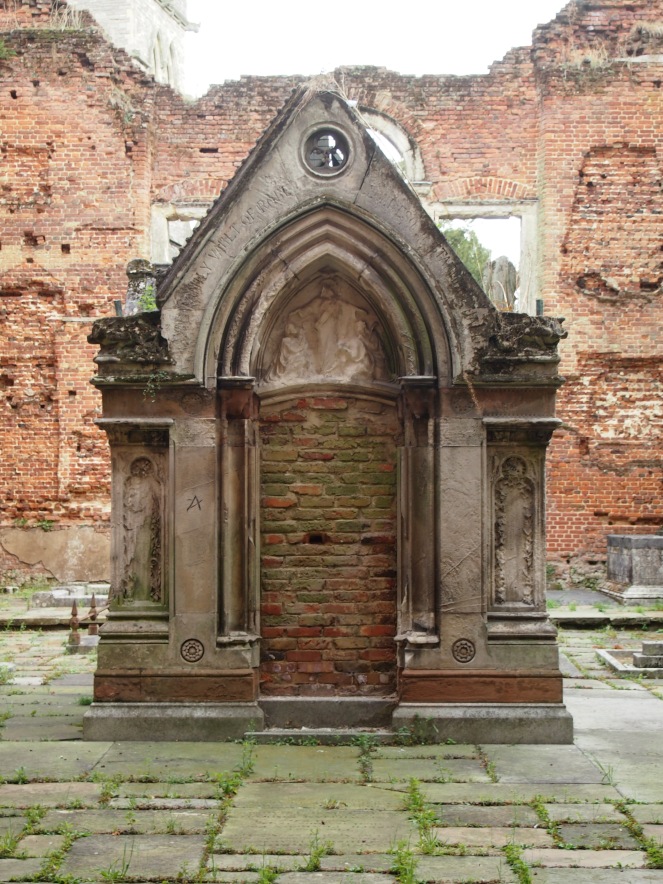
One of the Hollonds buried here is Robert Hollond (1808-1877), who served as an MP for Hastings but was also a keen balloonist. In 1836, along with Charles Green and Thomas Monck Mason – who was later to chronicle their expedition – Hollond set out from Vauxhall Gardens in a hot air balloon and 18 hours later landed in Weilburg in Germany, 500 miles away. This set a record for the longest distance travelled in a hot air balloon and the record was not broken until 1907.
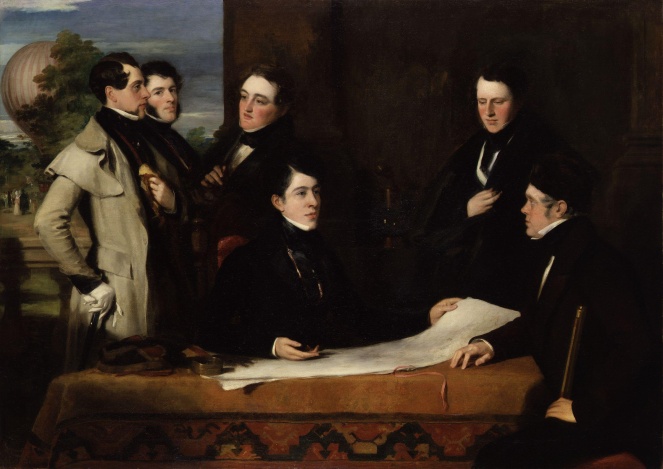
The Hollond mauseoleum has suffered over the years, not just from the vandalism that required its inhabitants to be reburied in the churchyard, but by the elements – the paler stone on the monument has weathered badly and felt crumbly to touch.

In the early 1990s, the ruin was covered in ivy and was in desperate need of repair – fortunately, funding was granted by English Heritage to clear the site of rubble and undergrowth and make it safe. This was a huge undertaking – the ruins had been left unmanaged for many decades and as well as being overgrown, they had been vandalised over the years.
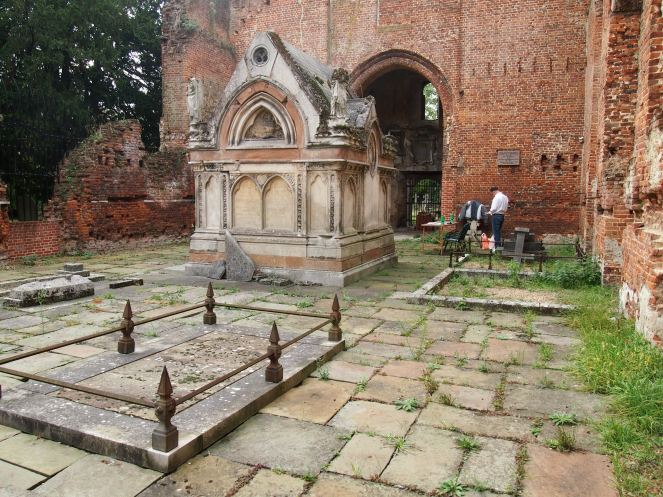
Part of the restoration work included paving the floor of the ruined church to help prevent the regrowth of plants and trees, and the most unstable areas of wall were rebuilt. Secure gates and security spikes were fitted to the doors and windows to prevent unauthorised entry and reduce the risk of vandalism.
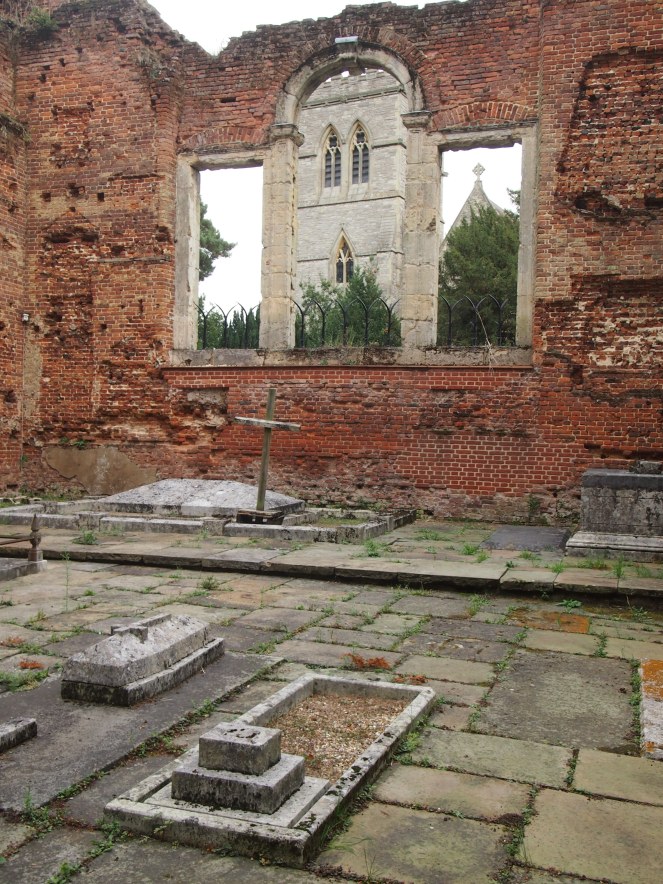
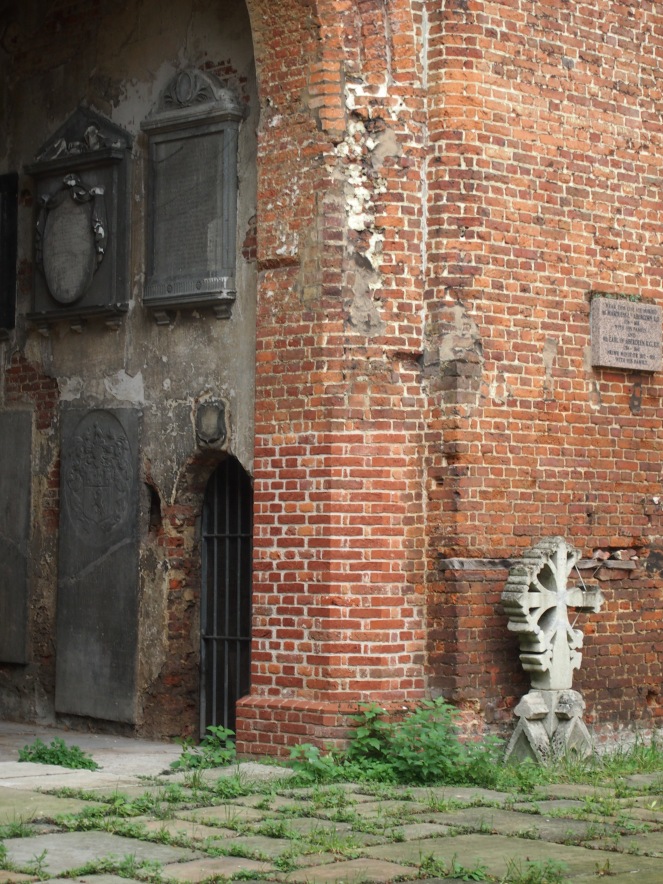
The ruin of the Brick Church poses some interesting conservation questions. One of the major problems the structure faces is damage caused by plants and trees taking root in the brickwork, which can cause walls to crack and collapse. Keeping the masonry clear of plant growth is a tricky and expensive process – last time such work was undertaken, a steeplejack had to be employed to remove the plants that were growing in high, difficult to reach places. Because the structure is open to the elements, it is vulnerable not only to vegetation taking root in the walls, but also to inclement weather. High winds have the potential to topple walls, and water that settles in the cracks in bricks and mortar can freeze in the winter, which causes cracks to expand and weakens the structure.
It’s a charming ruin – I really enjoyed speaking to the volunteer who was able to answer my questions about the church and its history. It’s clear that the ruin is looked after by a group of people who are really passionate about its conservation and who work hard to continue to keep the church at the heart of the community. The ruin is a unique place, and its setting in a beautiful churchyard makes it rather picturesque. Considering how easily it could have been lost forever in the 1850s, it’s a great example of an old building that’s survived completely by accident and that continues to enthral history enthusiasts and photographers alike today.
The Brick Church is open to the public on Saturday afternoons between April and September.
References and further reading
History of the Churches of Great Stanmore, St John’s Church Stanmore http://www.stjohnschurchstanmore.org.uk/Content/History
‘Great Stanmore: Church’, A History of the County of Middlesex: Volume 5, T. Baker and R. Pugh (editors), 1976 http://www.british-history.ac.uk/report.aspx?compid=26912
List entry summary of Old Stanmore Church, English Heritage http://list.english-heritage.org.uk/resultsingle.aspx?uid=1079747
Stanmore – London Tube Rambles Walk, London Tube Rambles http://freshfields.blogspot.co.uk/2007/03/stanmore-jub-ilee-line-sta-nmore-has.html
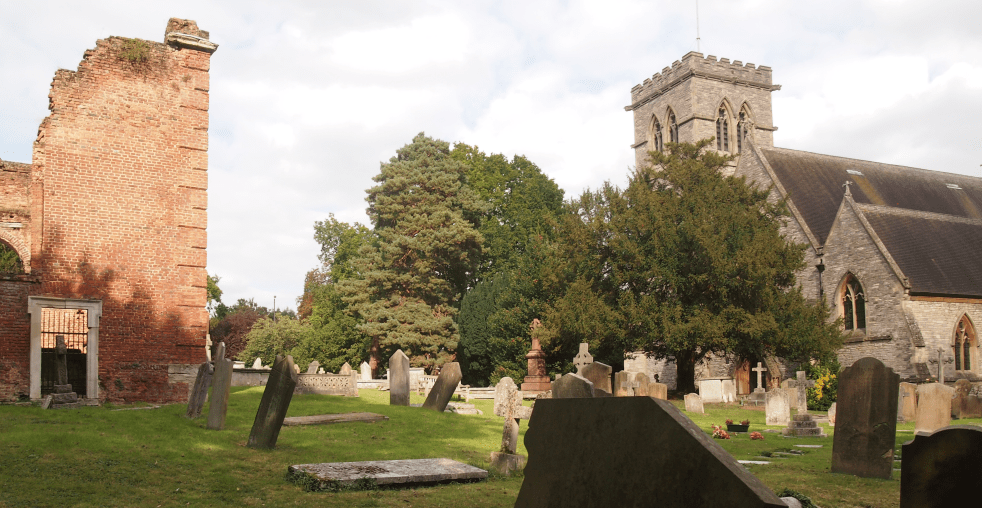

If there’s a finer image than an English church and churchyard on a sunny autumn day, I’m yet to see it! Lovely post, Caroline – I particularly like the monuments left on the wall of the old church. Must visit when it reopens next year.
LikeLike
Thank you! It was a beautiful day to explore the ruin and burial ground, and it’s definitely a place I’d recommend. I suspect that if it were in Zone 2 rather than Zone 5 it would be in all of those “Hidden London” type guides you see in museum bookshops.
LikeLike
Wonderful, a new ruin to visit, thank you 🙂
LikeLike
Yes, you should definitely go and visit it! It’s a beautiful place and absolutely fascinating too.
LikeLiked by 1 person
What a delightful churchyard & great juxtaposition of the ruins and new church; oddly my local church, St Margaret’s Lee, looks very similar but I think St John Stanmore has a much greater variety of headstones and memorials. Some lovely, stories that you have found too.
LikeLike
I was amazed to come across so many fascinating headstones in this churchyard – I had to be quite picky about which ones to include in this post as there were so many!
Isn’t Edmond Halley buried at St Margaret’s, Lee?
LikeLike
You are right about Halley, his tomb isn’t that exciting though, it became quite badly eroded and while restored in the 1850s was oddly done, by a co-incidence it will almost certainly feature in next week’s 2nd part of following the meridian. There are two other Astronomers Royal buried there, John Pond and Nathaniel Bliss.
LikeLike
Long wanted to visit here – fascinating!
LikeLike
It’s a super place, full of brilliant gravestones – I definitely recommend visiting!
LikeLike
Interesting story of one of my local ruined churches I didn’t even know was there. The home of W S Gilbert, with adjacent lake, is now the Grimsdyke Hotel in nearby Old Redding. Grimsdyke is a reference to the prehistoric earthwork which ran from Pinner to Harrow Weald – Grims Dyke or Ditch – sections of its stonework can still be seen. In another local graveyard lies Leefe Robinson, a pilot awarded the VC for being the first to shoot down a Zeppelin in the first war – only to succumb to the Spanish flu subsequently. An area, often neglected, but full of history. Thank you for visiting.
LikeLike
I really enjoyed exploring the ruin and the churchyard – it’s not an area I know well and, particularly in light of your comment, I can see that I’ve only really scratched the surface in terms of the fascinating old places in the area!
LikeLike
W.S.Gilbert was an early user of the telephone, so had one installed at Grimsdyke. As a consequence, before all-figure telephone numbers were introduced, numbers in Stanmore were on the GRImsdyke exchange.
Capt. William Leefe Robinson (from Stanmore/Harrow Weald) shot down the first German airship (in Cuffley), and won the VC for doing so. He claimed it was a Zeppelin in his report, but it was a Schutte-Lanz. The current Vicar of Cuffley is originally from Stanmore.
Some years ago, Miller and Carter took over the Leefe Robinson VC pub and restaurant (which is next door to his grave) – it took considerable effort to prevent them from removing its name.
LikeLike
I grew up not far from here. I seem to recall enquiring to join a team doing archaeological and conservation work on this church when I was just getting started in archaeology (early 1990s), but I think the project may have just come to a close (or it was the end of the season) – hence I never got involved in the end.
If you’re ever visiting up that way again (and you don’t know of it already) St. John the Baptist Church in Pinner is well worth a look – there’s an interesting monument with a “coffin in the sky”, called the Loudon Monument; plus a wooden tombstone of a man who lived to 118 years. And a short way down the road from there (in Paines Lane) is an old cemetery where Horatia Nelson Ward – daughter of Admiral Nelson and Lady Hamilton is buried.
Tim
LikeLike
I haven’t been to Pinner for years, so thank you for the tips! I am particularly intrigued by the 118 year old man.
LikeLike
If you Google search “William Skenelsby” there are quite a few links relating to him and photos of the wooden headstone too.
LikeLike
Caroline – thank you for your wonderful work on St. John’s brick church. You say you are from Lancashire – so you will be interested that the church was built in 1632 at Sir John Wolstenholme’s initiative – the descendant of an earlier Wolstenholme who had moved to London from Derbyshire, but from a Wolstenholme family that was originally in Rochdale (documented in 1161).
Sir John’s home was adjacent to the church, and he was a member of the East India Company and of the Virginia Company, and financed voyages to seek the North West passage to the Orient.
LikeLike
Thank you Mick – great to learn about a Lancs connection with the brick church! Sir John sounds like an interesting character – do you know if he was buried in the church? If so, I wonder if his monument survives either in the ruin or in the new church tower.
LikeLike
Caroline – there are 4 generations – all named John.
The first member of the family John, who came south to Stanmore died in 1603, was buried in the previous church 1/2 a mile to the south, but was moved and reburied in the brick church.
Sir John, who financed the brick church is buried in the brick church (in a tomb that refers to his being buried near the communion table – the communion table at the east end of the church , later to become the altar was an initiative of William Laud, the Bishop who consecrated the church, later became Archbishop of Canterbury, and was executed for high treason.) His effigy, by Nicholas Stone, was moved to the present church.
His son John was buried in the brick church – no tombstone or monument.
His son John was buried in the brick church and his monument, a bedstead, the best monument we have was moved to the tower room of the present church.
LikeLike
A fascinating post – I must visit when the ruined church is open.
LikeLike
Tony – St. John’s are finding it difficult to find stewards for every week, and are opening every fortnight or by arrangement. Our open Saturdays this year are June 24, July 8 & 22, August 5 & 19, and September 2, 16 & 30.
Hope to see you (and other readers) when we can.
Mick Oliver
LikeLike
The Garden Museum had a similar experience to our experience in St. John’s brick church, which is described in my attachment.
Best regards
Mick Oliver
________________________________
LikeLike